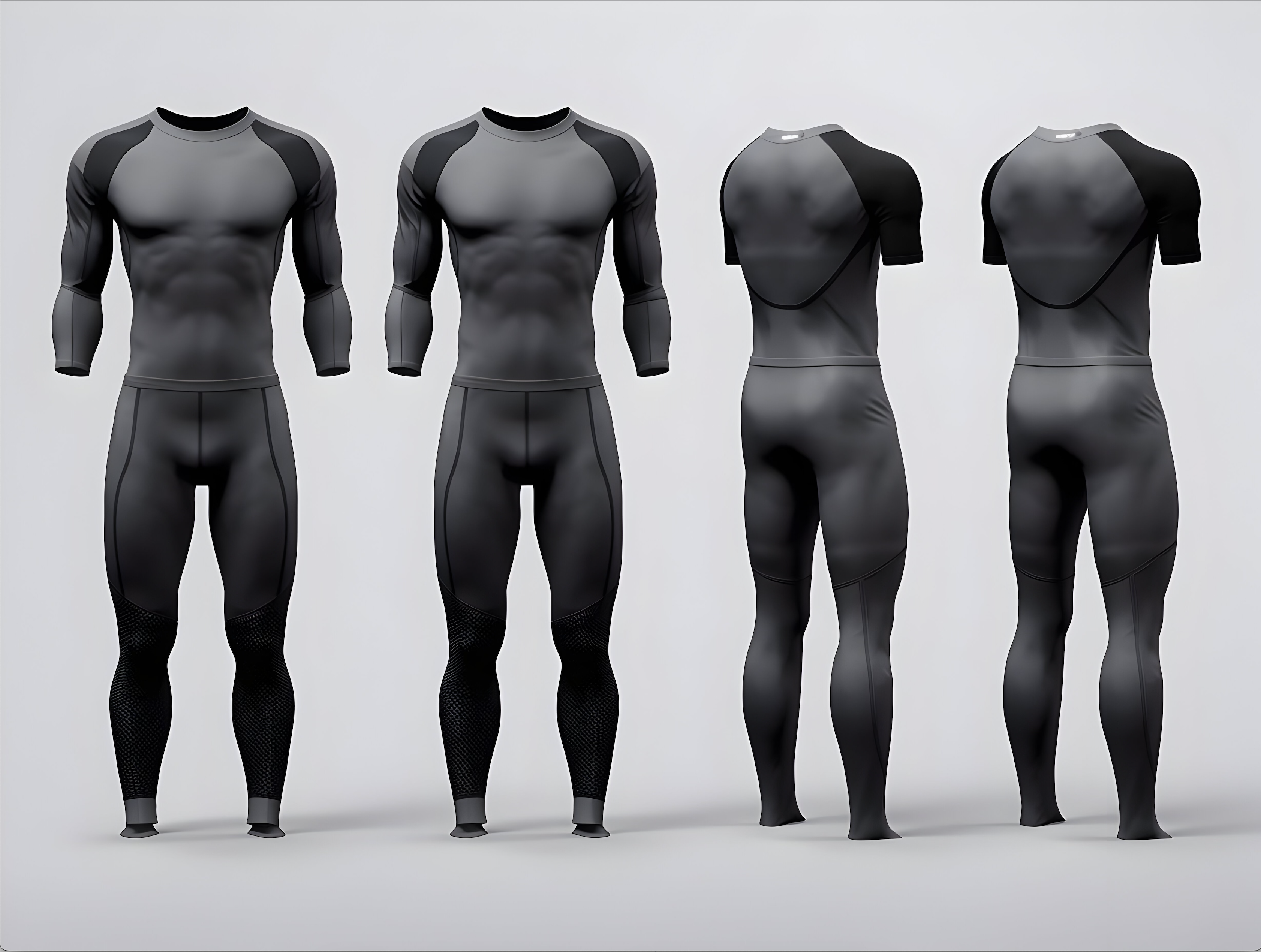What is Compression Wear?

What is Compression Wear?
Compression wear has become a significant trend in sports apparel, offering various benefits for athletes and fitness enthusiasts. If you're a sportswear designer looking to incorporate compression gear into your next collection, this guide covers everything you need to know about compression wear, including its benefits, fabric choices, and how it enhances performance.
What is Compression Apparel?
Compression apparel refers to garments designed to provide a tight fit that promotes blood and lymphatic flow through the body. This fit is achieved through specific grading of the garments and the use of particular fabrics. The primary purpose of compression wear is to enhance performance and speed up recovery by ensuring better circulation, which brings more oxygen and nutrients to the muscles.
How Compression Apparel Works?
Compression gear supports blood flow and lymphatic drainage, which helps in:
Delaying Muscular Fatigue: Improved circulation brings more oxygen to the muscles, reducing the buildup of lactic acid and carbon dioxide, which cause fatigue and soreness.
Speeding Up Recovery: Enhanced blood flow delivers nutrients faster to the muscles, aiding in quicker recovery post-workout.
Temperature Regulation: Breathable and sweat-wicking fabrics help keep the wearer cool in warm environments and warm in cooler settings.

Benefits of Compression Wear
1. Support
Good compression gear provides support to various muscle groups during workouts. The tight fit helps stabilize muscles, reducing vibrations and the risk of injury. This support enables more efficient exertion of effort, enhancing overall performance.
2. Breathability
Compression fabrics are typically elastic and breathable, promoting air circulation around the wearer. This ventilation keeps the wearer cool and comfortable, preventing overheating and discomfort during intense workouts.
3. Reduced Muscle Soreness
By promoting blood and lymphatic flow, compression gear reduces muscle soreness and improves recovery time. The increased oxygen supply to the muscles helps prevent the buildup of lactic acid, which causes soreness. This allows for quicker recovery and less downtime between workouts.
4. Flexibility
Compression garments are made from stretchy fabrics that provide excellent flexibility. This ensures a full range of motion during workouts, enhancing performance and safety. The snug fit also reduces the risk of fabric getting caught on equipment, which can prevent accidents.
5. Comfort
Compression gear can provide a comforting sensation of pressure on the skin, which many wearers find motivating and relaxing. Properly fitted compression garments reduce the risk of chafing and discomfort, making workouts more enjoyable.
6. Dryness
Compression fabrics, such as polyester and nylon, have sweat-wicking properties that keep the wearer dry. These fabrics draw moisture away from the skin to the surface of the fabric, where it evaporates. This helps maintain comfort and prevents the discomfort of wearing sweat-soaked clothing.
7. Mental Boost
Compression wear can also offer a psychological boost. Studies have shown that compression gear can reduce the rate of perceived exertion, making workouts feel less strenuous and enabling wearers to push harder and longer.
8. Enhanced Muscle Definition
Compression gear provides a form-fitting look that highlights muscle definition. For men, this can reinforce the visual progress of their workouts, while for women, compression leggings and tops can enhance natural curves, offering a confidence boost and positive reinforcement.
Fabric Choices for Compression Wear
The choice of fabric is crucial in compression wear, as it affects performance, comfort, and durability. Common fabrics used include:
Polyester-Spandex Blends: Known for their breathability, moisture-wicking properties, and affordability.
Nylon-Spandex Blends: Offers superior moisture-wicking and a silky feel, though slightly more expensive than polyester blends.
Specialty Fabrics: Such as those with bamboo charcoal lining, which offer additional benefits like odor resistance and improved thermal regulation.
Conclusion
Incorporating compression wear into your sportswear collection can offer significant benefits to your customers, from enhanced performance and support to improved recovery times and comfort. By staying current with activewear trends and choosing the right fabrics, you can create high-quality compression gear that meets the needs of athletes and fitness enthusiasts alike.
About FittDesign
FittDesign is a full-service design and production company specializing in the sportswear and activewear industry. We provide comprehensive solutions including innovative design, detailed technical packs, and high-quality manufacturing. Our expertise supports brands in creating functional and durable sportswear that meets the demands of a competitive market.
Ready to Bring Your Activewear Vision to Life?
Contact Us today and let’s get started on building your activewear brand!
